One of the breads randomly chosen for the Mellow Bakers group this month is French Bread. This particular French Bread is made using the straight dough method, meaning it doesn’t utilize a preferment. I happen to prefer poolish baguettes so I almost didn’t make this one. However, some of the other bakers seemed to have good results with this bread so I thought I should give it a try.
I was going to give it my best shot even though I wasn’t sure if I would like it. Everything seemed to be going okay until I disregarded one of the most fundamental rules of baking bread: FOCUS. I was so distracted that I should not have been baking bread, but alas, I did it anyway and here is the result. I’m not sure if you can tell by the photo below, but the bread is a little bit crispy burnt on the bottom.
Here’s what happened…
I started out ready to conquer this bread. I mixed the dough and let it ferment for 2 1/2 hours.
After the first 50 minutes, I did the stretch and fold technique. We didn’t develop the gluten very much during the mixing phase so folding the dough helps develop the gluten.
First you turn the dough out onto a heavily floured surface. The flour won’t be incorporated into the dough so don’t skimp on this part because the dough will stick to the surface and your fingers.
Then, you take one side and lift it up and bring it over the middle of the dough.
With spread fingers, use both hands to pat down the dough and degas it. Obviously, I couldn’t use both hands and still take a photo so you only see one hand here.
Next, take about one-third of the dough from the right side and fold it in toward the center, overlapping the first fold.
Press it to degas.
After you fold the right-hand third of the dough into the center, reach over to the far side of the dough, bring about one-third toward you and fold this portion.
Brush off the excess flour. Finish by taking the dough closest to you and folding that portion away from you and into the center.
Pick up the dough in a mass,
and replace it in the bowl.
Let the dough rise for another 50 minutes. Then do the fold and stretch process again. Then let it rest for another 20 minutes and proceed to the shaping step.
Shaping the Loaves
Divide the dough into two rounds. Hammelman’s formula is enough for 4 baguettes, but I halved the recipe because I didn’t need that much bread. So I divided the dough in half and shaped each piece into a round. Then I let each round sit for about 15 to 20 minutes.
Then I shaped them into baguettes using the following technique. Some of the photos are sort of fuzzy because it’s hard to take photos and shape a baguette at the same time, but you’ll get the gist.
Shaping the Baguettes
Lightly flour a work surface and place the preshaped dough with the good side down. Gentle flatten the dough into an oblong shape of even thickness.
Fold one-third of the dough piece toward you so that it rests on itself, and gently pat out the air.
Turn the dough piece around 180 degrees, and again fold one-third of the dough toward you. Gently pat out the air again.
The dough should now be rectangular, and of even thickness.
Beginning at the right side of the dough piece, begin the folding and pressing procedure. The left thumb rests at the top of the dough with the fingers of the left hand holding the loaf from behind.
The fingers fold a flap of dough over, covering the thumb, and the heel of the right hand presses the folded flap of dough to seal it. This folding and pressing is repeated down the entire length of the dough.
The seam should be tight, and there should be a lip of dough along the bottom length. Turn the dough around 180 degrees and repeat the folding and pressing process, this time bringing the seam right to the work surface.
Turn the dough over so that the seam is directly on the bottom.
Place your right hand in the center of the dough, contouring your hand so that your fingertips and the heel of your hand are on the work surface, and the palm of your hand is in contact with the dough.
Roll the dough back and forth 3 or 4 times and then begin to elongate the dough. Once the dough has reach the desired length, place it in the couche to rise.
Cover the loaves with plastic wrap
And a cloth so that air currents don’t crust the surface. I put the flour container on one side and the sugar container on the other side to help the loaves keep their shape while they were rising in the couche.
Then I let the dough ferment for about an hour and a half.
I was actually feeling pretty proud of the loaves up to this point.
Then…
I made my first mistake. I was talking to my sister on the phone and the final proofing time was up. So I transferred the loaves from the baker’s couche to the perforated pan.
Ooops! I forgot to score the loaves. Darn. I didn’t want to move them again so I left them in the pan to score them there.
The conversation with my sister was still going on and there didn’t seem to be any end in sight and I was getting anxious. I’m sure that never happens to you with your sister. Since I couldn’t seem to get off the phone, I decided to score the bread while I was talking on my iPhone. Big mistake… You can’t score bread with one hand. Oh well! So the scoring didn’t turn out quite so good.
I figured the bread would be okay, the scoring just wouldn’t look so pretty. So I put the loaves in the preheated oven and let them bake for awhile.
By this time, I was off the phone and everything was going fine. The loaves had about 10 minutes more to bake so I decided to go feed Charlie (the dog) real quick. I went outside and fed him and then I got sidetracked again. My plants in the straw bale garden were calling to me. They needed watering so I watered them, and then I picked some Roma tomatoes. About 20 minutes later, I came back in the house and thought, Hmmm…what’s that smell. Oh no! The bread. How I could forget in the span of 5 minutes that I had bread baking is beyond me but it happened.
By the time I rescued the loaves, they were burned on the bottom and pretty crispy.
The poor loaves looked pretty pitiful, but all was not lost. I sliced the bread and cut off the burned part and served it toasted with Brushchetta. It was actually pretty good.
The next bread in the July series is Bialys and it calls for white bread crumbs so I know what I’m doing with the rest of this bread. See, and you thought all was lost.
The moral of this story is that you should always focus when you’re baking bread, but even if you mess up, you can still salvage it and even have a little bit of fun. Besides, you can always give the crumbs to the birds. They are always happy to sample my blunders. Charlie is usually pretty good about eating my bread as well.
Thanks for joining me and my bread bloopers today in the Bread Experience bread-baking blog. I hope you’ll join me again soon.
Be sure to check out what all the other bakers have been up to in the Mellow Bakers group.
Happy Baking!
Cathy
 The Mellow Bakers group was started by Paul at Yumarama. We’re baking breads from Bread: A Baker’s Book of Techniques and Recipes by Jeffrey Hamelman.
The Mellow Bakers group was started by Paul at Yumarama. We’re baking breads from Bread: A Baker’s Book of Techniques and Recipes by Jeffrey Hamelman.
You might enjoy some of the other breads that we’ve featured in the Bread Baking Blog.
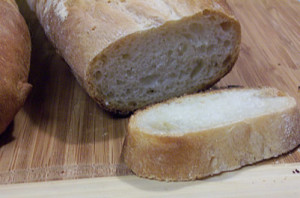
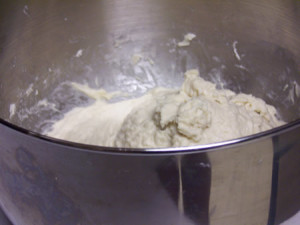
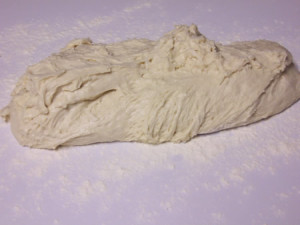
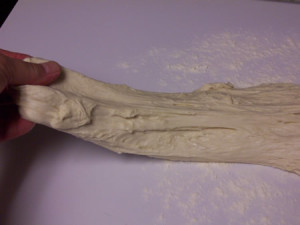
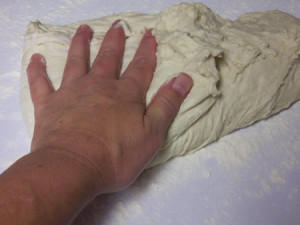
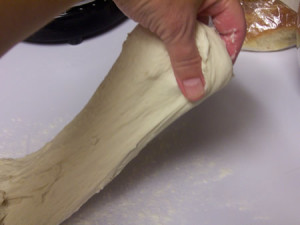
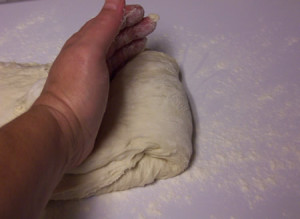
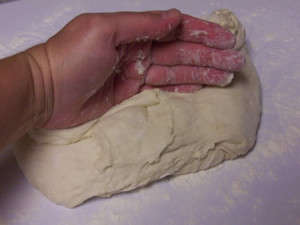
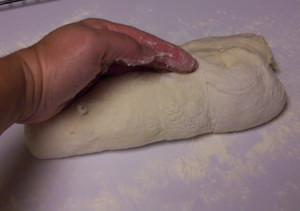
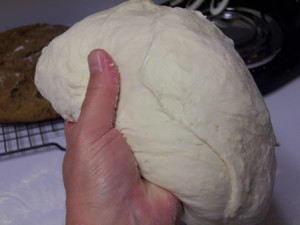
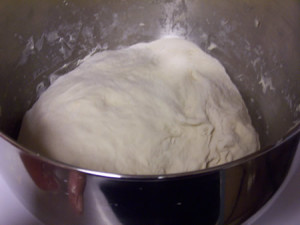
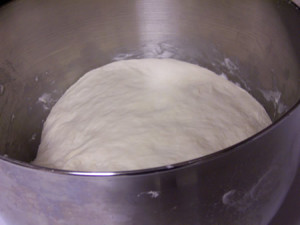
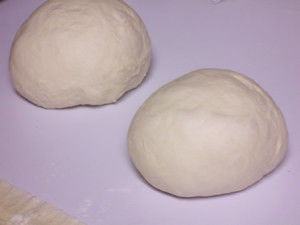
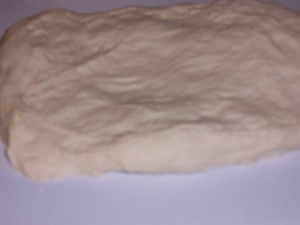
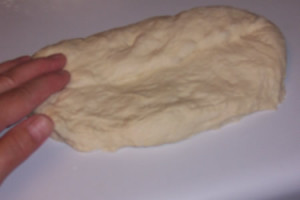
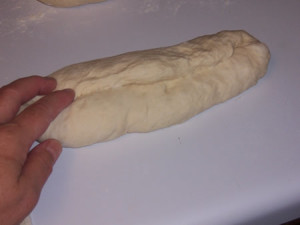
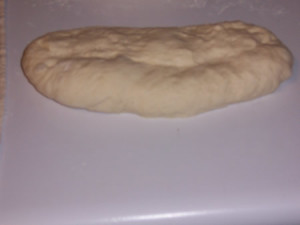
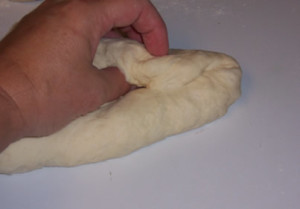
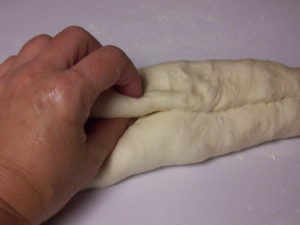
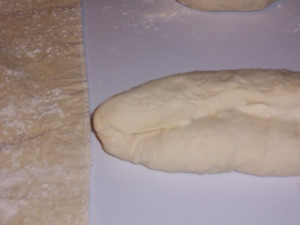
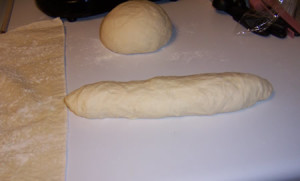
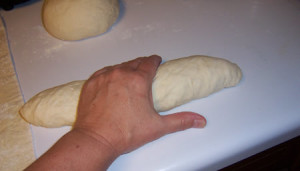
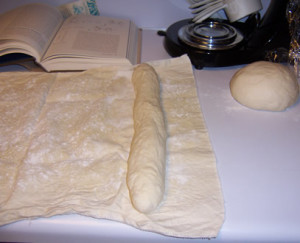
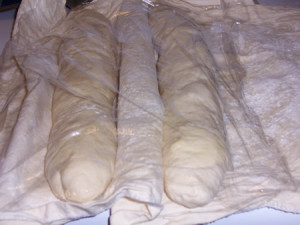
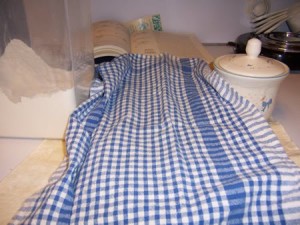
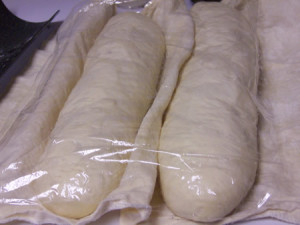

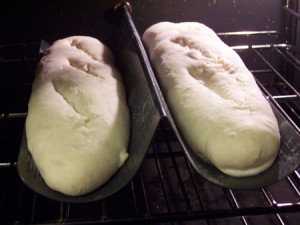
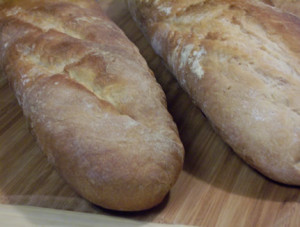
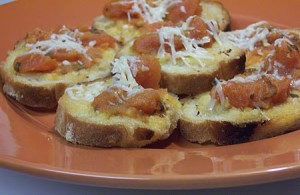
Abby says
Enjoyed your post, Cathy! I am frequently a distracted baker, so I totally understand! The bruschetta looks great, though, and I’m sure the bread crumbs will be awesome in the bialys!
Joanna says
Wow, do you know what I really admire Cathy? The way you managed to shape those baguettes and take photos, that certainly required focus and concentration!
I’d love to sample your bruschetta, what did you put on the top? They look delicious !
Cathy (breadexperience) says
Thanks Joanna! I used store bought bruschetta this time. But I’ll be doing a post soon on making (canning) bruschetta. Stay tuned…